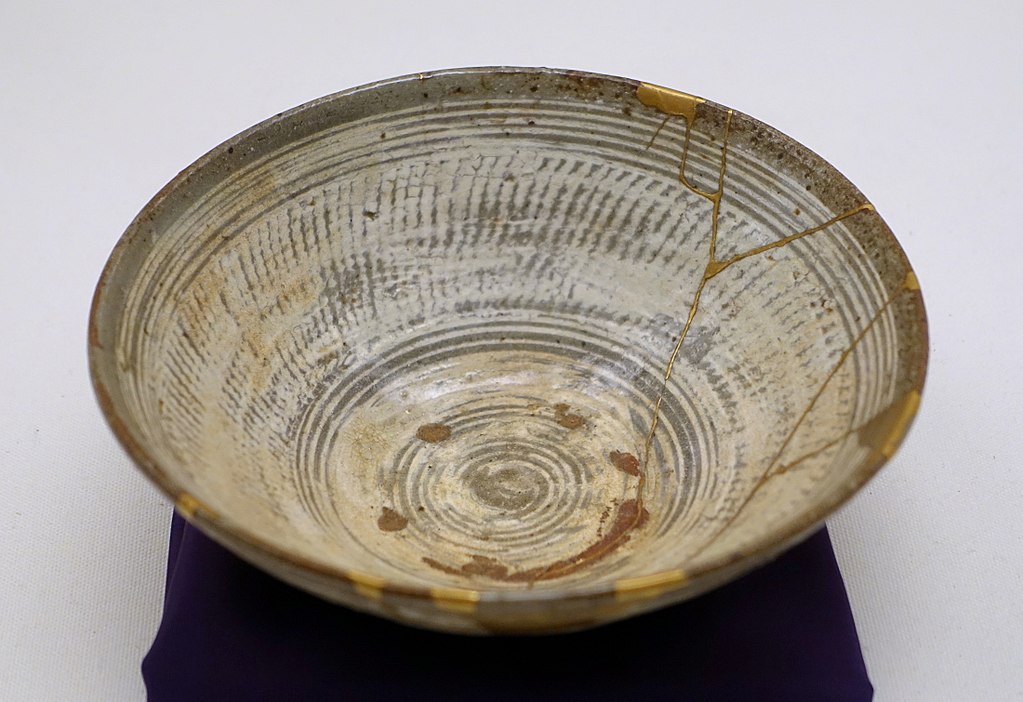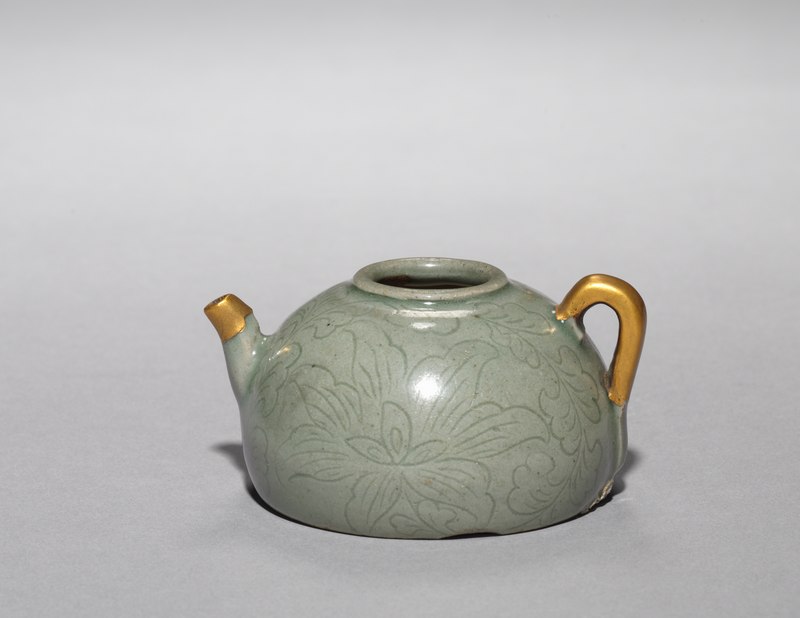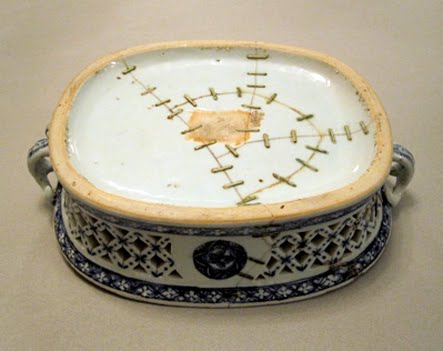Kintsugi, a captivating art form born in Japan hundreds of years ago, teaches us an exquisite lesson: there is beauty in imperfection. This traditional technique is not just about repairing broken pottery; it’s a profound expression of resilience, turning flaws into gold-lit features. Kintsugi pieces are unique, each telling its own story of recovery and beauty, marked by seams of gold, silver, or platinum. At the heart of Kintsugi lies a powerful philosophy.
It encourages us to embrace our scars, understanding that our breaks and repairs are not just part of our history—they make us distinctly beautiful. This art form invites us to look beyond conventional beauty standards, finding elegance and strength in what we often consider flawed. Through Kintsugi, we learn to celebrate every crack and imperfection, seeing them as symbols of our unique journey and resilience.
The Origins and Evolution of Kintsugi
Kintsugi’s journey began in 15th century Japan, a testament to the enduring allure of embracing imperfection. The art form’s inception is often linked to the tale of a cherished tea bowl, accidentally broken. Instead of discarding this piece, the decision was made to not only repair it but also transform it into something more magnificent. Thus, Kintsugi was born, turning breaks into golden veins of beauty.
This technique quickly transcended its initial practical purpose, evolving into a deeply philosophical and artistic practice. Artisans started to deliberately highlight repairs, using precious metals like gold, silver, or platinum. This shift marked a departure from traditional repair methods, which aimed to conceal damages, to a celebration of the object’s history and imperfections.
Over centuries, Kintsugi has become more than a mere art form; it’s a symbol of resilience, an emblem of beauty in imperfection. Its evolution mirrors changes in societal values and aesthetics, continuously inspiring not just artists but anyone who encounters its profound message. Kintsugi reminds us that there is beauty in broken things, and with care and creativity, they can be mended into works of art, rich with history and character.
Philosophical Foundations
Connection to Wabi-sabi
Kintsugi’s roots intertwine deeply with Wabi-sabi, a Japanese aesthetic that finds profound beauty in the imperfect, impermanent, and incomplete. This philosophy celebrates the rustic, the understated, and the naturally flawed, seeing them as imbued with a quiet grace and a soulful depth. Kintsugi, by highlighting cracks and repairs with precious metals, embodies this aesthetic, turning damaged objects into art that tells a story of survival and beauty. It teaches us to appreciate the marks time leaves behind, urging us to see the elegance in the patina of age and the story in every blemish.
The Significance of Kintsugi in Zen Buddhism
Zen Buddhism’s influence on Kintsugi is profound, emphasizing the beauty of life’s fleeting nature and the acceptance of the inevitable cycle of growth, decay, and death. Kintsugi mirrors Zen principles through its celebration of each item’s unique history, embracing flaws and imperfections as essential elements of its character. This art form encourages mindfulness, asking us to reflect on our own lives and the transient beauty of our experiences. It serves as a reminder that in imperfection and impermanence, there is peace, acceptance, and the true essence of existence.
Kintsugi as a Metaphor for Resilience and Healing
Beyond its physical beauty, Kintsugi offers a powerful metaphor for human resilience and healing. Just as broken ceramics are painstakingly restored to new life, we too can find strength and beauty in our own scars. Kintsugi teaches us that our challenges and setbacks, much like the cracks in pottery, are not to be hidden but honored and celebrated. These repaired fractures symbolize our capacity to overcome adversity and emerge stronger. Through this lens, Kintsugi is not just an art form but a life philosophy, encouraging us to embrace our flaws and transform our wounds into badges of honor, reflecting our journey towards healing and renewal.
The Kintsugi Process: An Art of Restoration
Kintsugi, a venerable Japanese technique, transforms broken ceramics into masterpieces adorned with veins of gold, silver, or platinum. This art form goes beyond mere repair, celebrating each object’s unique history by emphasizing its fractures rather than hiding them. The materials used in Kintsugi are not only functional but symbolic, with precious metals representing the value found in embracing flaws.
The process begins with the collection of the broken pieces of a ceramic item. These fragments are carefully cleaned and glued back together using a special lacquer mixed with powdered gold, silver, or platinum. This lacquer serves as both an adhesive and a highlight for the cracks, turning what was once broken into a visually striking piece that tells a story of survival and beauty. The technique requires patience and precision, as the lacquer must dry completely before the next step can be taken, often resulting in a weeks-long restoration process.
Before and after the Kintsugi repair, the transformation is profound. Initially, the ceramic is an item marred by use and accident, its cracks and breaks signaling its end. After Kintsugi, these same marks become signs of its resilience and rebirth. They are highlighted, not hidden, with the shimmering lines of precious metals tracing its history. This contrast is not just visual but deeply metaphorical, symbolizing the transformation through healing and the celebration of life’s imperfections.
Just as Kintsugi highlights the beauty and value in mending broken things, Kabuki Theatre has played a pivotal role in shaping and enriching modern Japanese culture through its enduring art forms. Discover how this traditional theater continues to influence contemporary life in our latest post, How Has Kabuki Theatre Influenced Modern Japanese Culture?.
Symbolism and Cultural Impact
The Symbolic Meaning of Kintsugi in Japanese Culture and Beyond
Kintsugi transcends its physical form to embody profound symbolic significance in Japanese culture and beyond. It represents the art of embracing the flawed or imperfect, highlighting the beauty in what is broken and then mended. This art form teaches that breakage and repair are natural parts of an object’s history, not something to disguise. In a broader sense, Kintsugi symbolizes resilience, renewal, and the inherent beauty of embracing one’s imperfections. It encourages a shift in perception—where scars become symbols of strength and survival, not shame.
Reflection of Societal Values Towards Age, Damage, and Restoration
Kintsugi offers a refreshing contrast to a world often obsessed with the new and perfect. It reflects a deep-seated appreciation for the aged, the weathered, and the imperfect in Japanese society and inspires a broader cultural shift towards valuing sustainability and mindfulness. This art form champions the idea of cherishing and repairing what one already owns rather than discarding it, promoting a sustainable approach to living. It also mirrors societal values of patience, care, and the deep respect for objects and their histories, encouraging a more thoughtful consumption.
Modern Applications and Inspirations
Kintsugi’s principles have transcended the boundaries of traditional pottery repair, finding resonance in contemporary art, design, and even personal development. Artists and designers worldwide draw inspiration from this age-old craft, incorporating its golden joins into various media, from sculptures and paintings to furniture and fashion. This modern adaptation showcases the versatility and timeless appeal of Kintsugi, proving that the concept of beauty in imperfection is universal.
Beyond its aesthetic applications, Kintsugi serves as a powerful metaphor for personal growth and recovery. In the realm of mental health and wellness, the philosophy of Kintsugi encourages individuals to embrace their flaws and past traumas as integral parts of their identity. It promotes the idea that healing from emotional scars can lead to newfound strength and beauty, much like the physical mending of ceramics with gold.
Delve into the art of Kintsugi and its profound philosophy of embracing imperfection as beauty in Japanese culture. For more captivating insights into Ukiyo-e Japanese art and history, explore our article, What Is the Significance of Ukiyo-e in Understanding Edo Period Japan?
Conclusion
Kintsugi is more than just a method of repairing broken pottery; it’s a philosophy that teaches us the beauty of embracing our flaws and imperfections. This ancient art form has transcended centuries to inspire modern applications in art, design, and even personal growth, advocating for sustainability and mindful living.
Kintsugi encourages us to see the beauty in what is broken, suggesting that our scars, both physical and emotional, are not to be hidden but celebrated as part of our unique story. It reminds us that healing is not just about the restoration of physical objects but about the resilience and renewal of the human spirit. By highlighting the cracks and repairs, Kintsugi offers a powerful metaphor for life: that our challenges and repairs make us more beautiful and robust.






